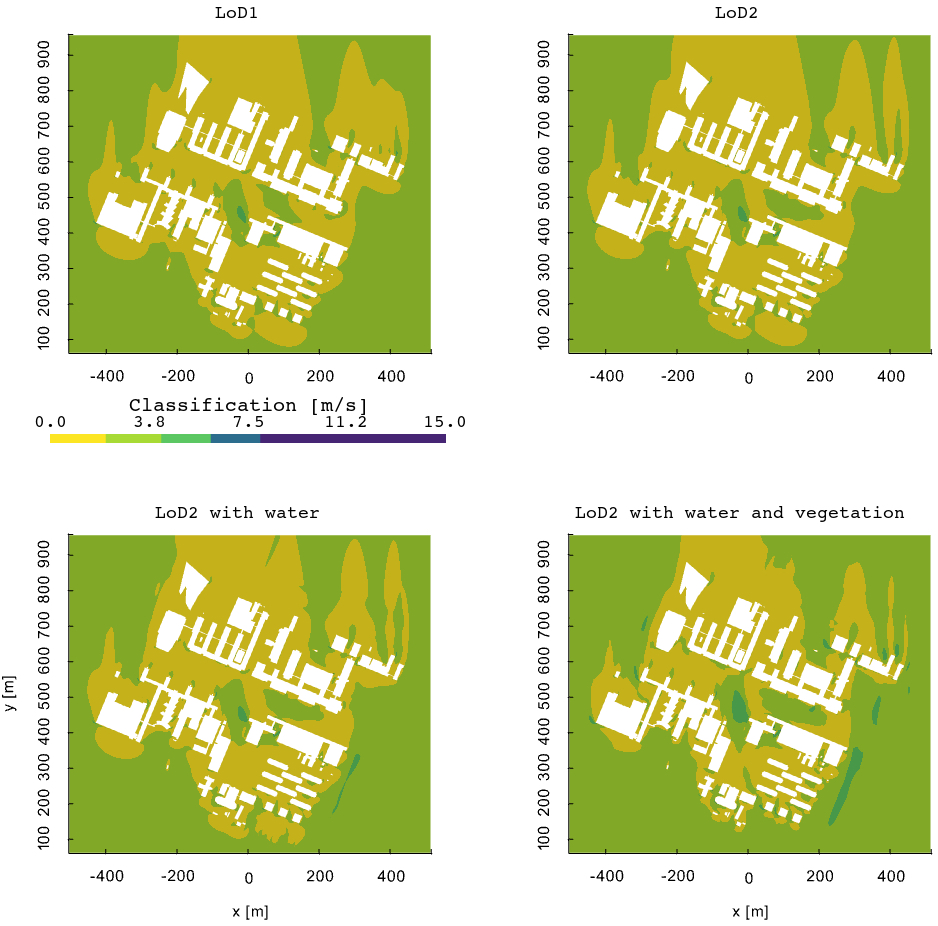Abstract
Climate change and urbanization rates are transforming urban environments, making the use of 3D city models in computational fluid dynamics (CFD) a fundamental ingredient to evaluate urban layouts before construction. However, current geometries used in CFD simulations tend to be built by CFD experts to test specific cases, most of the times oversimplifying their designs due to lack of information or in order to reduce complexity. In this work we explore what are the effects of oversimplifying geometries by comparing wind simulations of different level of detail geometries. We use semantic 3D city models automatically built and adjust them to their suitable use in CFD. For the first test, we explore wind simulations within a troublesome section of the TUDelft campus, the passage next to the EWI building (the tallest building in our domain), where the use of 3D city model variants show how differences in geometry and surface properties affect local wind conditions. Finally we analyze what these differences in velocity magnitude could mean for practitioners in terms of pedestrian wind comfort.
Main finding: different level of detail in urban geometries impacted our CFD predictions for wind, specially if semantic surfaces were included. This outcome can affect the analysis that relate for example to pedestrian wind comfort.
Main limitation: the study was purely numerical, and further cases compared with experiments are still on-going.
